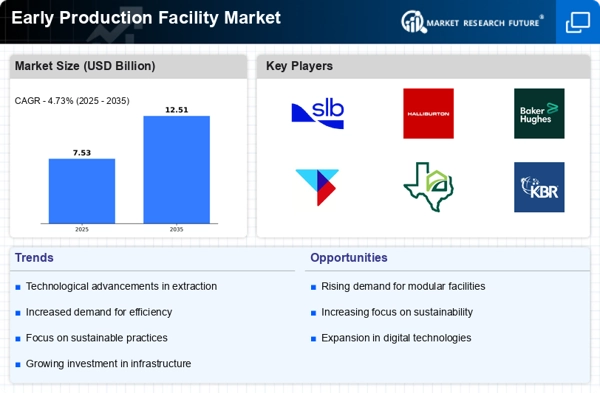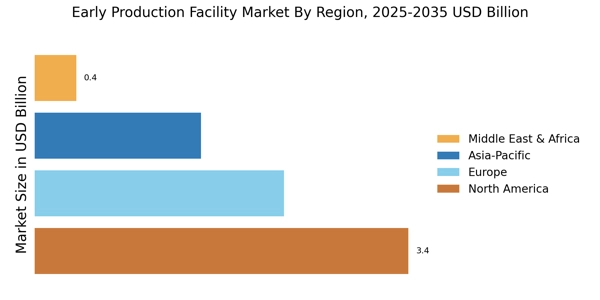Rising Energy Demand
The Early Production Facility Market is experiencing a surge in demand due to the increasing global energy requirements. As economies expand, the need for efficient energy production becomes paramount. Early production facilities, which enable the rapid extraction and processing of hydrocarbons, are essential in meeting this demand. According to recent data, energy consumption is projected to rise by approximately 30% by 2040, necessitating innovative solutions in energy production. This trend indicates a robust market for early production facilities, as they provide a means to quickly capitalize on new discoveries and enhance production efficiency. The ability to deploy these facilities in remote locations further supports their relevance in the current energy landscape, making them a critical component in addressing the rising energy needs.
Technological Innovations
Technological innovations are transforming the Early Production Facility Market, enabling more efficient and effective energy production. Advances in drilling techniques, automation, and data analytics are enhancing the capabilities of early production facilities. For example, the integration of real-time monitoring systems allows for improved decision-making and operational efficiency. Furthermore, innovations in modular facility design are facilitating quicker deployment and scalability, which are essential in responding to fluctuating market demands. The market for these technologies is projected to grow significantly, with investments in energy technology expected to reach 500 billion dollars by 2030. This trend suggests that the Early Production Facility Market will continue to evolve, driven by the need for enhanced performance and reduced operational costs.
Investment in Infrastructure
Investment in infrastructure plays a pivotal role in the growth of the Early Production Facility Market. Governments and private entities are increasingly allocating funds to enhance energy infrastructure, which includes the development of early production facilities. This investment is driven by the need to modernize aging systems and improve efficiency in energy extraction and processing. Recent reports suggest that infrastructure spending in the energy sector is expected to exceed 1 trillion dollars over the next decade. Such financial commitments are likely to bolster the establishment of early production facilities, enabling quicker deployment and improved operational capabilities. As infrastructure improves, the Early Production Facility Market stands to benefit significantly, as these facilities become integral to the overall energy supply chain.
Regulatory Support and Incentives
Regulatory support and incentives are crucial drivers for the Early Production Facility Market. Governments worldwide are recognizing the importance of energy security and sustainability, leading to the implementation of favorable policies for early production facilities. These policies often include tax incentives, grants, and streamlined permitting processes, which encourage investment in new technologies and facilities. For instance, certain regions have introduced regulations that facilitate the rapid deployment of early production facilities, thereby enhancing their attractiveness to investors. This regulatory environment not only supports the establishment of new facilities but also promotes innovation within the industry. As a result, the Early Production Facility Market is likely to see increased activity and investment, driven by these supportive measures.
Shift Towards Renewable Energy Integration
The shift towards renewable energy integration is influencing the Early Production Facility Market. As the world moves towards a more sustainable energy future, early production facilities are adapting to incorporate renewable energy sources. This integration not only enhances the sustainability of energy production but also aligns with global efforts to reduce carbon emissions. Recent studies indicate that the renewable energy sector is expected to grow at a compound annual growth rate of over 8% in the coming years. This growth presents opportunities for early production facilities to diversify their energy portfolios and improve their environmental footprint. Consequently, the Early Production Facility Market is likely to see a transformation as it embraces renewable technologies, positioning itself as a key player in the evolving energy landscape.


















Leave a Comment